11+ Latest SSL/TLS Certificates Statistics 2025
Essential SSL/TLS Stats for an Industry Overview
SSL and TLS certificates are important tools for security online. As we move into 2025, it’s valuable to understand key statistics about their use. This article summarizes the most relevant data points about TLS/SSL certificates statistics from across the web, providing insights into their impact and whether businesses should invest in them.
The information covers topics like adoption rates, the effect on search rankings, cost, browser support, and more. Whether you need certificates for personal or business use, this collection of up-to-date SSL/TLS certificates statistics will help inform your decisions and plan for the future.
By condensing the key facts and figures, this article aims to serve as a comprehensive resource on SSL Certificates Statistics 2025.
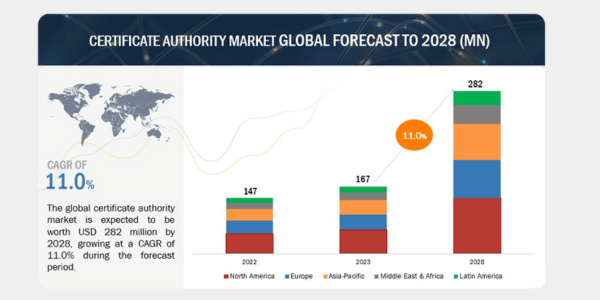
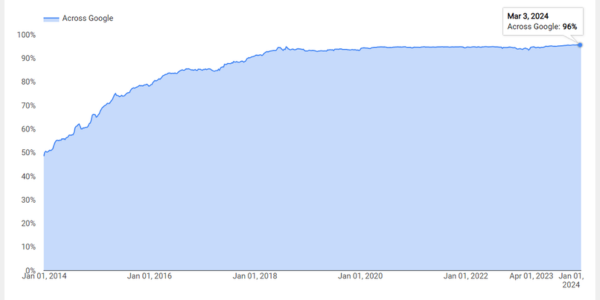
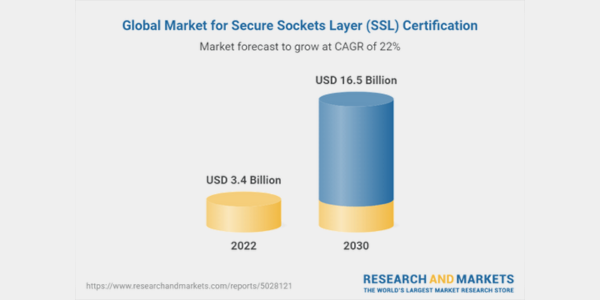
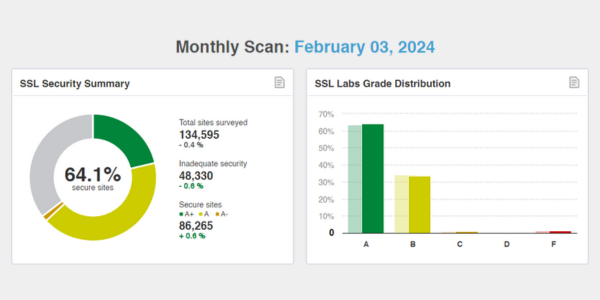
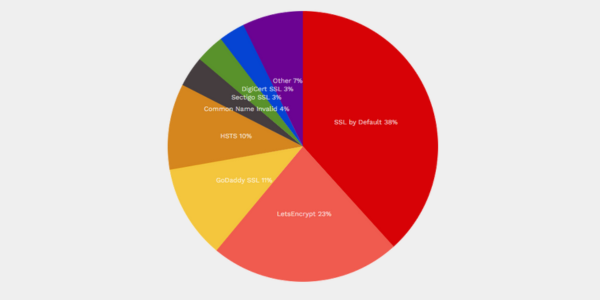
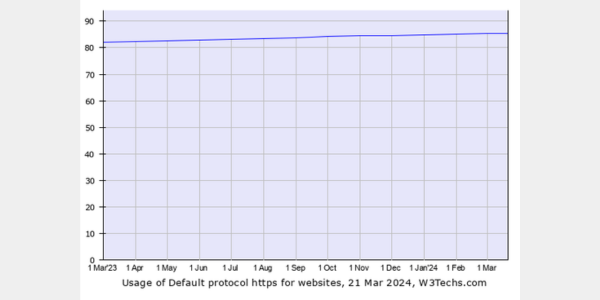
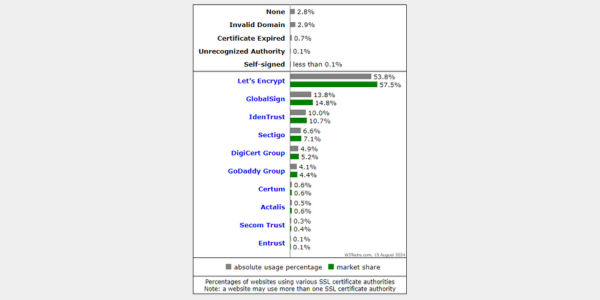

#1. 302,068,343 SSL Certificates Detected on the Internet
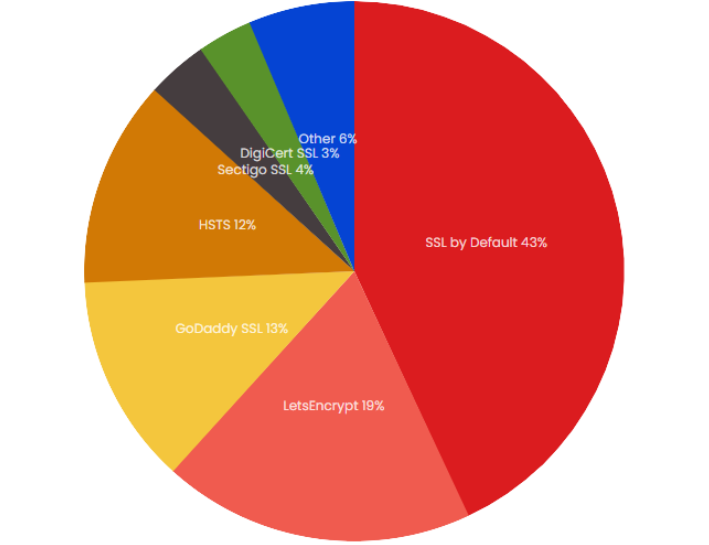
The number of SSL certificates on the Internet has surged to over 302 million as of January 04, 2025.
The United States has the most SSL certificates of any country, with over 27 million. Germany comes in second place globally with nearly 12 million certificates. On the other end, Eritrea has only 45 SSL certificates for the entire country.
Source: BuiltWith.com
#2. 90% of all SSL Certificates Are Issued by 6 Certificate Authorities
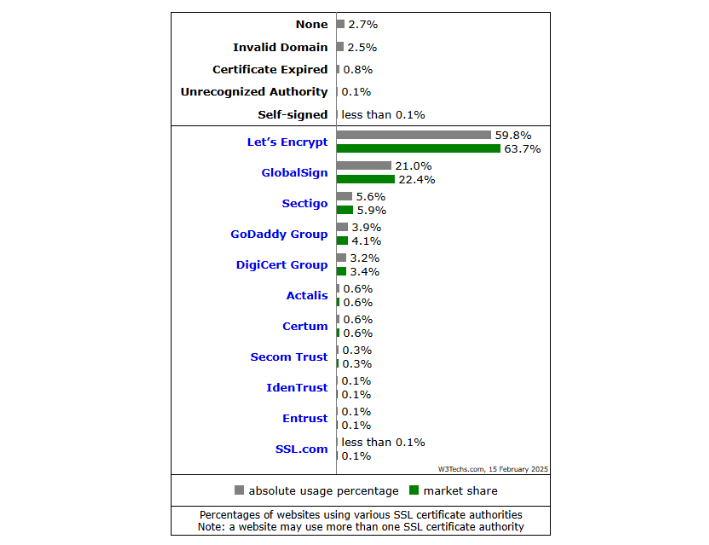
An overwhelming majority of SSL certificates, around 90%, are issued by just six certificate authorities. Let’s Encrypt leads the market with over half of all certificates, commanding a 63.7% market share.
GlobalSign takes second place with 22.4% market share. Sectigo rounds out the top three with 5.9% of the SSL certificate market.
The remaining certificate authorities each have less than 0.1% market share, including major players like Amazon. This stark disparity reveals how concentrated and centralized the SSL certificate marketplace has become.
Source: W3Techs.com
#3. The Certificate Authority Market is Expected to Reach $282 million by 2028
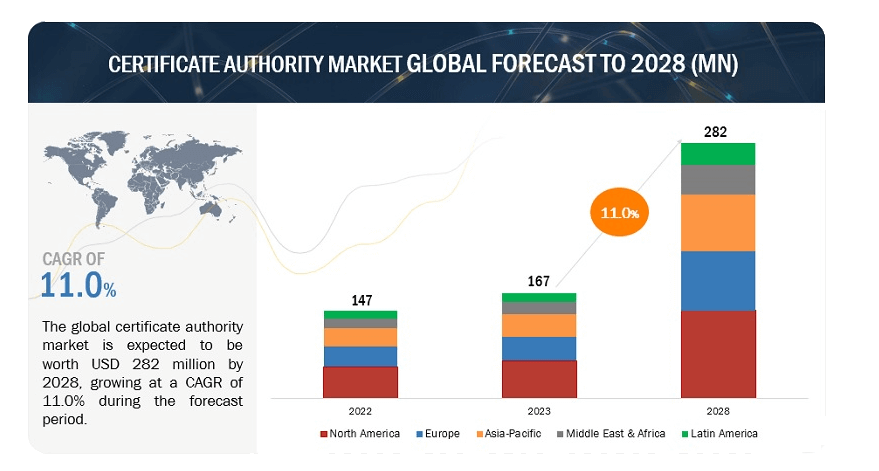
Market researchers predict robust growth ahead for the certificate authority industry. The global market is expected to expand from $167 million in 2023 to reach $282 million by 2028. This represents a compound annual growth rate of 11% over the five-year forecast period.
Drivers of this anticipated growth include the continued adoption of SSL/TLS certificates for website security as more traffic shifts to HTTPS protocol. The expansion of the Internet of Things and demand for device authentication certificates are other factors likely to increase revenues for certificate authorities through 2028.
Source: Marketsandmarkets.com
#4. 96% of Chrome Browsing Time Is Spent Over Secure HTTPS Pages
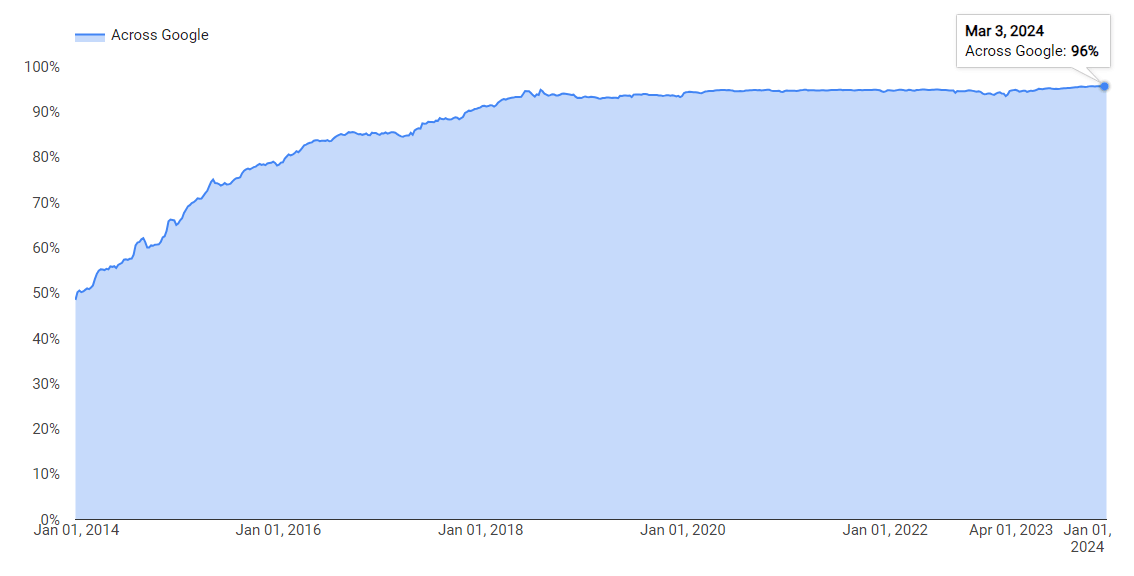
Google encrypts 96% of traffic across its search engine, providing a secure experience for users. As one of the most widely used search engines, Google plays a major role in promoting internet security. By implementing HTTPS encryption on its own properties and prioritizing secure sites in search rankings, Google helps drive broader adoption of web security standards.
With the vast majority of searches now protected, users can trust Google to deliver private, encrypted connections along with relevant results. The company’s focus on encryption has significantly contributed to a more secure internet ecosystem.
Source: Transparencyreport.google.com
#5. 35.9% of Sites Have Inadequate Security
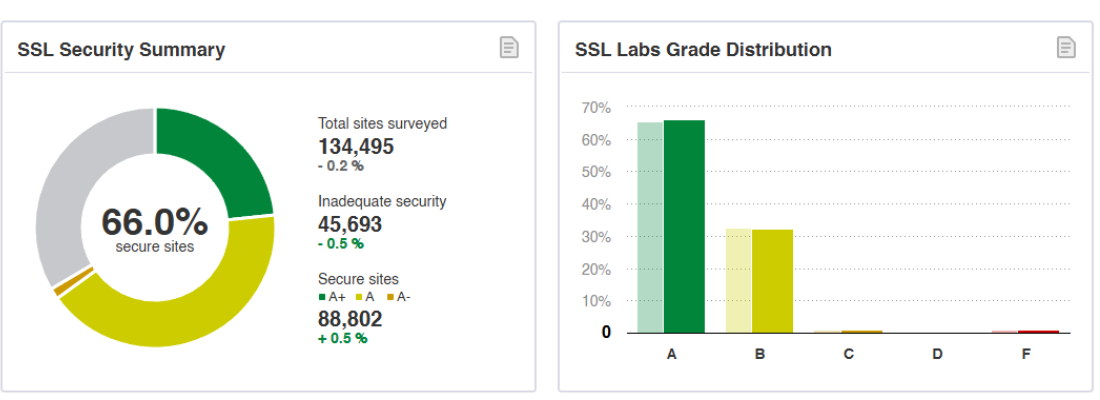
SSL Pulse, which monitors the quality of SSL/TLS support across the 150,000 most popular websites, reveals troubling security deficiencies. In their May 02, 2024, report, 34% of the 134,495 surveyed sites – totaling 45,693 – failed to follow best practices for SSL implementation.
These inadequate security measures included incomplete certificate chains and weak encryption ciphers. The high percentage of sites with flawed SSL configurations highlights the importance of proper setup for effective security.
Source: SSLLabs.com
#6. 85.4% of the Websites Use a Valid SSL Certificate

The use of valid SSL certificates on websites has increased dramatically over the past five years. According to a report from W3Techs, 85.4% of websites now use HTTPS, up from just 18.5% five years ago. This highlights the significant progress in adopting encryption to secure connections.
Although the vast majority of sites employ HTTPS, the remaining 14.6% still amounts to millions of websites that lack encryption. These unsecured sites pose a potential security risk to users’ data and privacy. While HTTPS adoption has come a long way, there is still work to be done to encrypt the internet and protect users across all websites.
Source: W3Techs.com
#7. 94.3% of SSL Certificates are Domain Validation
Domain Validation SSL certificates make up an overwhelming 94.4% of the market according to Netcraft data. Far behind are Organization Validation SSL certificates with 5.5% and Extended Validation SSL with just 0.1% market share.
Let’s Encrypt has been a major driver of DV dominance, providing over 1 billion free SSL certificates. However, premium certificates still carry significant traffic share. Sites with DV certs direct 60% of all SSL/TLS traffic, while 27% goes through OV sites and 13% via EV sites.
Source: Netcraft.com
#8. 62.1% of Sites Support the Latest TLS 1.3 Protocol
The latest TLS 1.3 protocol, released in 2018, includes improved security mechanisms and faster handshake performance. According to SSL Labs data, 62.1% of surveyed websites have adopted TLS 1.3 since its release.
However, 2.0% of sites continue to enable the now-deprecated SSL protocol despite its vulnerabilities.
#9. Over 90% of All Phishing Websites Use HTTPS
Phishing sites are increasingly using SSL/TLS certificates to appear more legitimate, according to the Anti-Phishing Working Group (APWG). In 2023, over 90% of phishing sites displayed the padlock icon indicating HTTPS protocol. This represents a 40% increase since 2019.
The APWG report shows phishing activity and HTTPS adoption rising in tandem, with valid SSL certificates now ubiquitous among phishing sites. The availability of free SSL certificates has enabled this trend by allowing phishers to easily obtain credentials to activate HTTPS.
Source: APWG.org
#10. Secure Sockets Layer (SSL) Certification Global Market to Reach $16.5 Billion by 2030
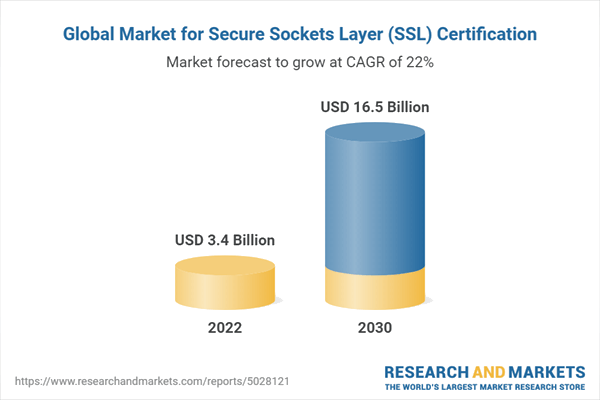
The global market for Secure Sockets Layer (SSL) Certification is experiencing remarkable growth. Valued at US $3.4 Billion in 2022, it is projected to reach as taggering US $16.5 Billion by 2030, growing at an impressive compound annual growth rate (CAGR) of 22% over the analysis period of 2022-2030.
One of the key segments, OV SSL Certificate, is poised for even more rapid expansion, with forecasts indicating a CAGR of 23.6%, culminating in a market size of US $9.5 Billion by the end of the analysis period.
Furthermore, taking into account the ongoing post-pandemic recovery, the DV SSL Certificate segment has undergone a readjustment, with growth projections revised to a CAGR of 21.1% for the next 8-year period.
Source: GlobeNewsWire.com
#11. 21% of Alexa’s Top 100,000 Sites Don’t use SSL
A concerning number of popular websites still fail to implement HTTPS encryption, according to a recent Internet Security Report by WatchGuard. Their findings show approximately 21% of the top 100,000 Alexa ranked sites – over 20,000 in total – continue transmitting data in plain text over HTTP.
This exposes sensitive user information and website content to potential interception and theft. The risks are especially troubling given the elite stature of the Alexa top 100,000 sites, which account for the vast majority of global internet traffic and online influence.
Source: WatchGuard.com
Conclusion on SSL Certificates Statistics
The statistics on SSL/TLS certificate usage show an increasing trend towards universal encryption on the web. With more websites adopting HTTPS and free SSL certificates becoming widely available, it is likely that by 2025 the majority of sites will be encrypted. This will be driven by user demand for privacy and security as well as requirements from browsers and search engines.
For website owners, obtaining an SSL certificate and transitioning to HTTPS will soon become an essential step to remain competitive and trusted. Overall, we can expect the web to become a more secure place in the next few years as encryption becomes the norm.
The collective efforts of tech companies, certificate authorities and website administrators will help realize the vision of an encrypted internet where users can browse safely.